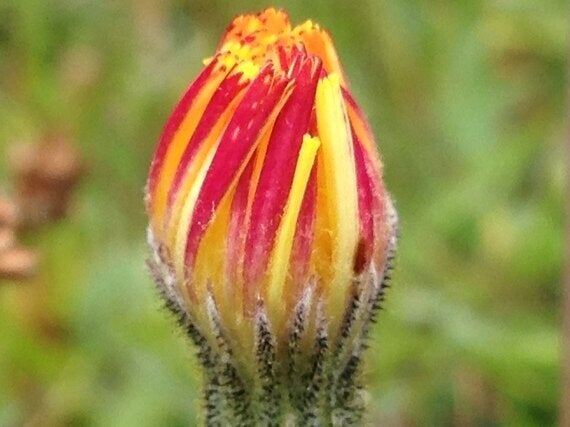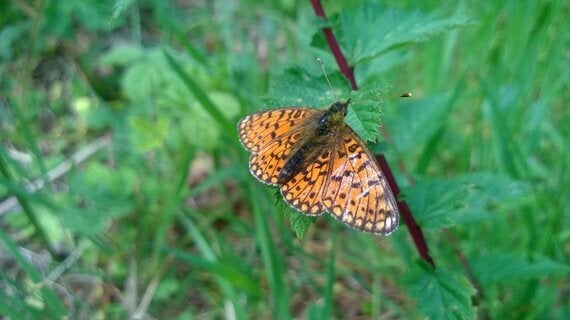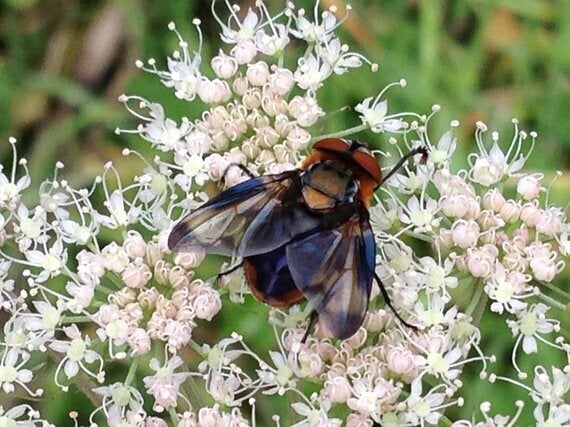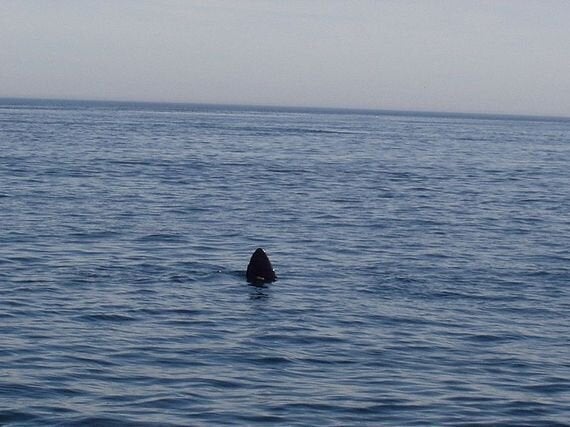You may have noticed the news last month regarding summer flooding at the puffin colony on the Farne Islands with the number of chicks fledging compared to last year having almost halved. The weather has helped some species this year though, as sunshine and showers causes lots of lush growth for many plants. I must get one negative out of the way - we all love slugs to an extent, even if that love is buried very deep, they are a part of nature after all, and have four noses - but they went to town on all of my garden this year. Now on to the positive.

Mouse-ear hawkweed ready to flower after the rain
Some butterflies, such as pearl bordered fritillary, struggled in the wet weather in late spring, but on sunny days in July huge silver washed fritillaries swooped around the meadows like giant orange bats. They would sometimes tumble and spin together before basking on the meadowsweet. We were asked to record our increasingly uncommon 'common blue' butterflies over the summer - these tiny butterflies of the bluest, shining blue ever (bluer than a Tardis without a doubt) have been spotted across the UK but it will be interesting to see the final numbers.

A slightly battered pearl bordered fritillary in April
Our solitary bees & flies did pretty well in the frequent rain punctuated by sunshine. The extra growth of flowers, umbellifers such as cow parsley and brambles provided plenty of nectar for Phasia hemiptera, a stunning tachinid fly that looks like a barrel that has rolled in orange peel with rock star sunglasses, patterned wings and orange hairs on the abdomen. These flies lie in wait for true bugs and lay their eggs on them, so the larva develop inside the host. Megachiles (leafcutter bees) could be found alongside many other fuzzy wonders enjoying the dune flowers at Stackpole in late June, when we had a few days of good weather.

Phasia hemiptera - the rock star of the fly world
The weather also helped birds - some of our nuthatches even managed to have a second brood at Llanerchaeron, while in late August some of our swallows in the barns still hadn't fledged, having arrived right on cue in the second week of April, exactly the same date as last year.
On the coast, dolphins flipped, spun and played in the surf at Mwnt frequently, while sunfish were also spotted. Sunfish are the biggest bony fish in the world (up to 3m high), and the only ones to regulate their temperature using the sun despite diving to the icy depths of 2,000 feet, hence the huge fin flopping out of the water. They followed the jellyfish over in the spring from more tropical waters - like the turtles, jellyfish are their favourite treat. They need all that food to produce up to 300 million eggs, more than any known vertebrate. In short, they are mad and therefore fit in perfectly in Wales.

Shark or sunfish? (It's a sunfish)
The meadows and grasslands also did well with the extra rain - our first autumn ladies tresses for around five years was spotted at Mwnt. No, the grammar isn't wrong here - one solitary plant, delicate and greenish white and one of the last flowers of the summer. They are coconut scented, and the name Spiranthes spiralis indicates how twirly they are, with the sunlight catching on the fine hairs sparkling next to the crisp snowy white of the petals. They are an anti-snowdrop, a reminder of winter to come rather than winter's end.